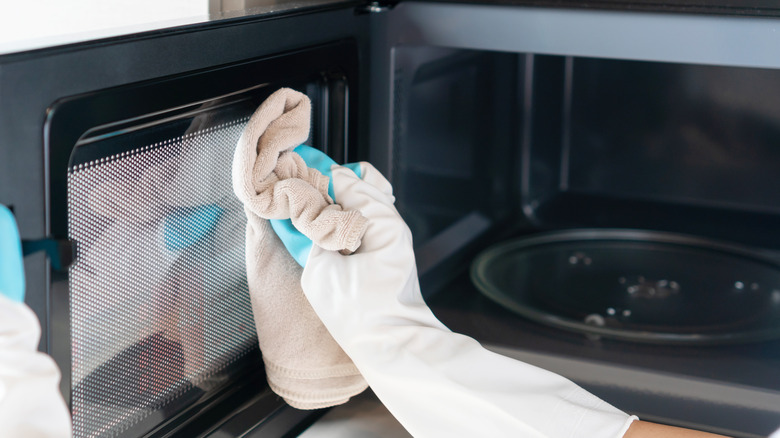Are You Cleaning Your Microwave Often Enough?
How often do you clean your microwave oven? Is it once a week, monthly, or every few months? As surprising as it may seem, this kitchen appliance can harbor all sorts of germs — despite its ability to kill bacteria. Microwave ovens can sterilize sponges and scrub pads, inactivating 99% of all microbes. However, bacteria can still thrive on the handles and walls of the microwave. Additionally, food debris can affect its efficiency over time and, in some cases, clog the filter, increasing the risk of fire.
With that in mind, it's a good idea to clean your microwave oven once a week or more. If you reheat a soup to the point where it splatters, clean up the mess immediately. Otherwise, the food splatter will harden and become a hot spot for bacteria. Plus, it will be much harder to remove, especially if we're talking about fatty foods that can leave grease stains on the microwave walls.
Clean your microwave at least once a week to keep bacteria at bay
How often you should clean the inside of your microwave depends on how frequently it's used. Cleaning it after each use may be a bit of overkill, but you should do it at least once a week or when dealing with food spills, foul odors, or visible grime. Simply mix equal parts of water and white vinegar in a microwave-safe bowl, then heat it on high to soften any food residue and neutralize odors.
Not only does vinegar have deodorizing effects, but it may also inhibit bacterial growth and reduce bacterial load. It has even been shown to be effective against E. coli, a bacterium responsible for gastroenteritis and other disorders. That said, microwave the vinegar mixture until you see steam on the glass window. Turn off and unplug the microwave oven and let it cool. Then wipe down the interior surfaces with a soft, damp cloth. You should also remove and clean the grease filter if your microwave has one. Finally, use a dry cloth to remove any remaining vinegar residue and excess moisture.
Wipe down the exterior after each use
Take the time to clean the exterior of your microwave oven after each use. Otherwise, you'll transfer germs from your hands to its door handle and then to the food you eat. In 2012, Kimberly-Clark took around 5,000 swap samples from office kitchens and break rooms to see which areas harbored the most bacteria. Nearly half of microwave door handles had an ATP (adenosine triphosphate) count of at least 300, indicating a high microbial load. Microwave door handles were the most contaminated surfaces after sink faucet handles. This means that germs can be spread in office kitchens when people heat up their lunch in a microwave or reheat a stale cup of coffee.
The appliance in your kitchen may not be as dirty as those at work, but it can still harbor bacteria. Make sure you wipe down the handle, control panel, and other external components with a soft cloth soaked in water and vinegar. Alternatively, you could also use a specialized microwave cleaner. You'll also want to wipe down the vents with a soft brush to remove stuck-on residue. For best results, avoid these common microwave cleaning mistakes most people make.


